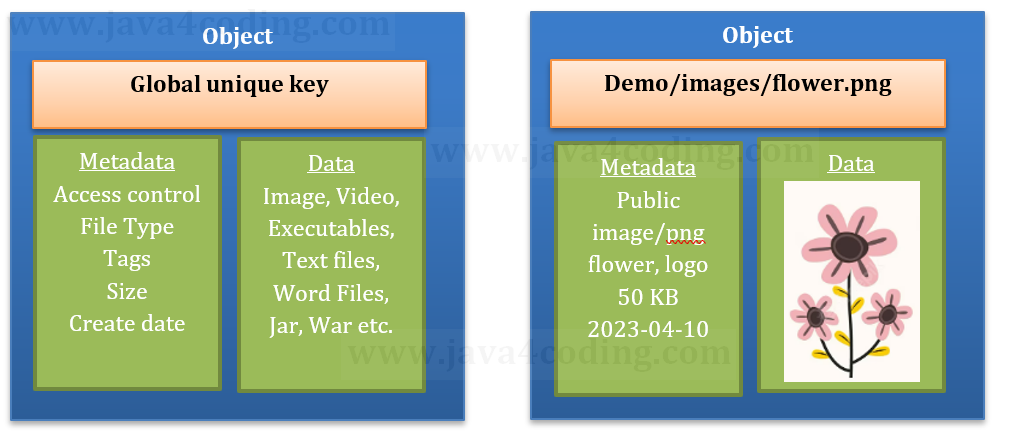| ☰ See All Chapters |
AWS Simple Storage Service (S3) Objects
In S3 buckets, data is stored as objects. It stores objects in key-value form, where the object is assigned with a unique key and the value is the actual data. Key also known as globally unique identifier (GUID) and you can address the object from different devices and machines in a distributed system using the GUID. Each object is assigned a URL, which can be accessed via the HTTP or HTTPS protocol. We can manage the access control list at the object level also. You can store any kind of data and unlimited data as long as the size of a single object doesn’t exceed 5 terabytes.
Amazon S3 object folder structure
Amazon S3 stores objects in a flat structure. It doesn't have any hierarchical structure where we can group objects under the bucket. But Amazon S3 Management Console provides support for displaying objects under folders and nested subfolders. AWS Console distinguishes the folders with / in the object's key name. For example, if we provide the object key as demo/test.txt, then it will show demo as the folder and below that test.txt as the object.
Object Properties
Each object consists of a globally unique identifier (key), some metadata, and the data itself. Amazon S3 creates metadata on its own such as creation time, last modified date, and memory size. Also, can create custom metadata, which can be used for our purposes. User-defined metadata keys should have a prefix such as x-amz-meta- in order to distinguish it from system metadata.

All Chapters

